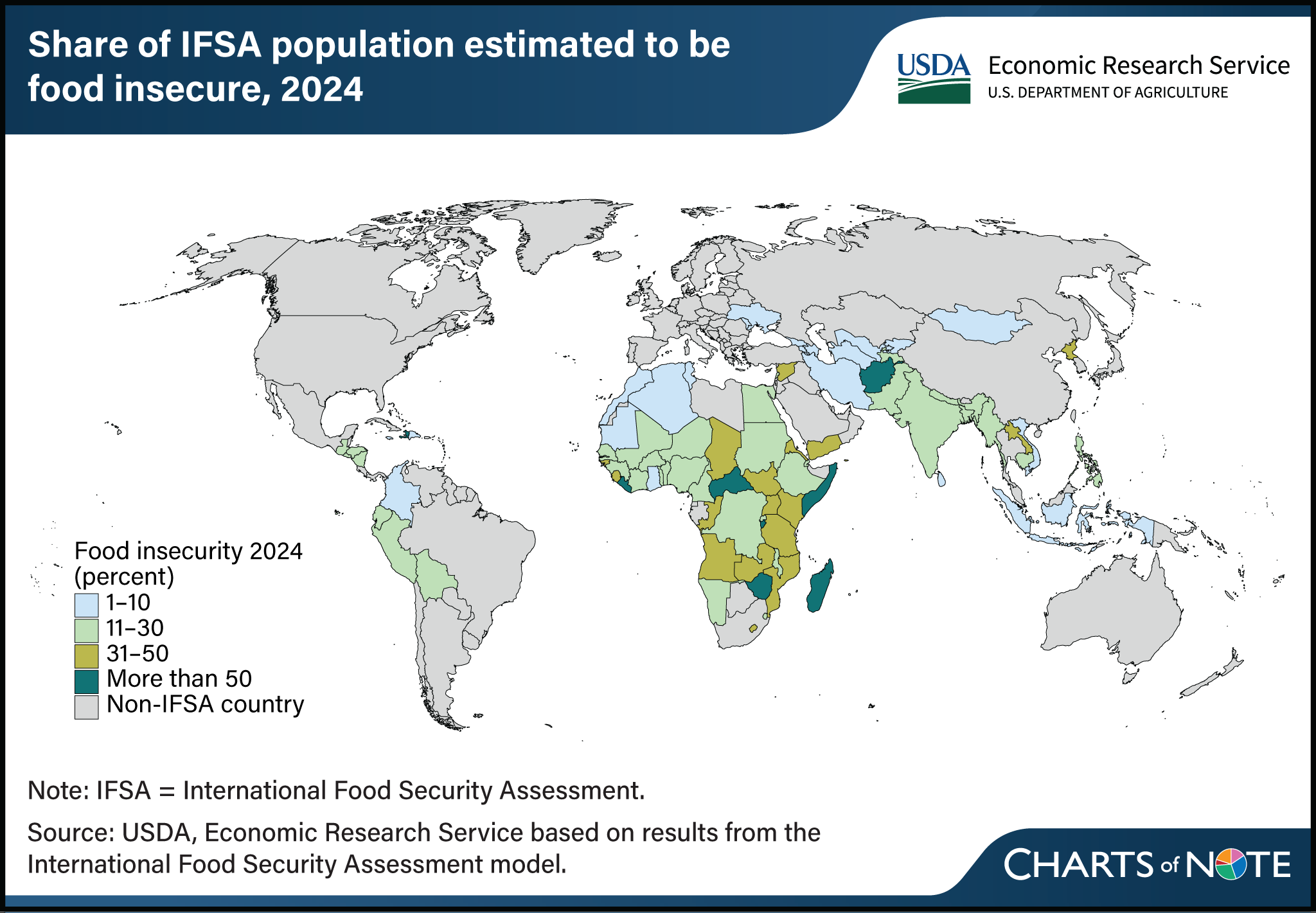Despite global improvements in food insecurity, progress for Sub-Saharan Africa lags
- by Lila Cardell and Yacob Abrehe Zereyesus
- 9/3/2024

In 2024, an estimated 824.6 million people, equivalent to 19.0 percent of the population included in the International Food Security Assessment (IFSA), are projected to be unable to access the 2,100 calories per day considered necessary for a healthy and active lifestyle. This represents a decrease of 313 million people from the 2023 estimate for the 83 low- and middle-income countries covered in the food security assessment. However, food insecurity is projected to remain elevated in many countries, especially in Sub-Saharan Africa, where it is estimated to affect 29.3 percent of the region’s population. In 2024, average annual per capita Gross Domestic Product (GDP), a proxy for income, is estimated at $2,483 in IFSA countries. However, in Sub-Saharan Africa it is estimated to be $1,387, the lowest of the five IFSA regions. Although food prices are projected to ease globally in 2024, domestic prices remain high in many Sub-Saharan African countries, making it difficult for consumers to access sufficient calories. While most countries will see a decrease in staple grain prices, countries relying heavily on imported rice (like many in West Africa) are projected to experience price increases following export restrictions implemented by India in July 2023. In addition to economic factors, military conflict and political instability are associated with high food insecurity rates in the region. This chart appears in the USDA, Economic Research Service report International Food Security Assessment, 2024-34, released in August 2024.

